1845
Harriet Backer (1845–1932) was born in Holmestrand on 21 January as the second of four artistically gifted sisters. The oldest, Inga (1842– 1915), would go on to become a distinguished singer, Agathe (1847–1907) a world-famous musician and composer, and Margrethe (1851–1940) a trained painter like Harriet. Harriet displayed some talent for drawing, but she also had literary ambitions. Their parents were the consul, ship owner an businessman Nils Backer (1815–1877) and Sofie, née Smith Petersen (1819–1882).
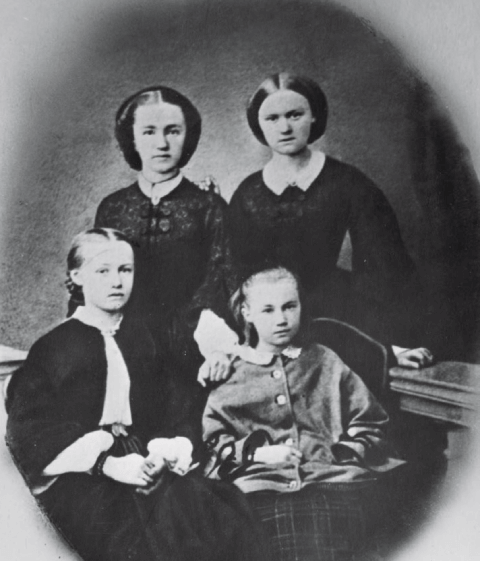
1860
Three years after the family’s move to Kristiania (Oslo), Backer enrolled in the ladies’ class at Johan Frederik Eckersberg’s painting school. Eckersberg (1822–1870) had been running his painting school in the capital since 1859, and a number of prominent artists started their training with him. Norway only got its first art academy in 1909. Backer studied with Eckersberg for two years. Between 1858 and 1871 Harriet Backer wrote several works of fiction, now in the National Library.
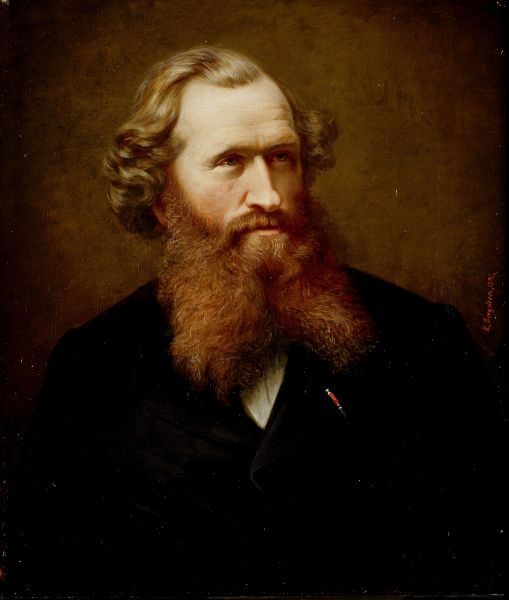
1866
In 1866 Backer began what she herself referred to as her ‘wandering years.’ The first stop was Berlin with her sister Agathe Backer, who was going there to study at Professor Theodor Kullak’s music academy. Backer wrote that she ‘immediately began copying in the old museum’ during these travels. At Kaiser Friedrich Museum she copied artworks under the tutelage of Alphons Holländer (1845–1923).
In 1871 Harriet Backer travelled with her sister Agathe to Italy. In Florence, she studied with the Swiss painter Anna Suzanne Fries (1828–1901).
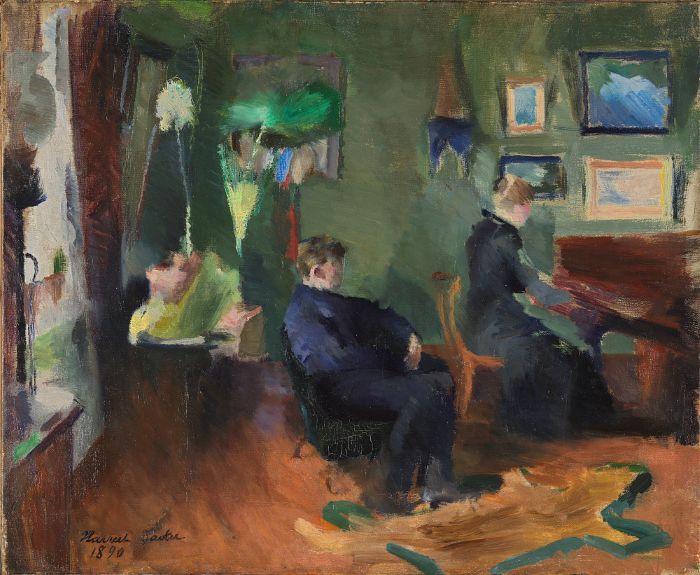
1872
Back in Norway in the winter of 1872, she enrolled in the ladies’ class at Knud Bergslien’s (1827–1908) painting school in Christiania. Backer studied with the Norwegian painter for two years alongside Asta Nørregaard (1853–1933) and Marie Tannæs (1854–1939), amongst others. Nørregaard would become a good friend, colleague, and neighbour.
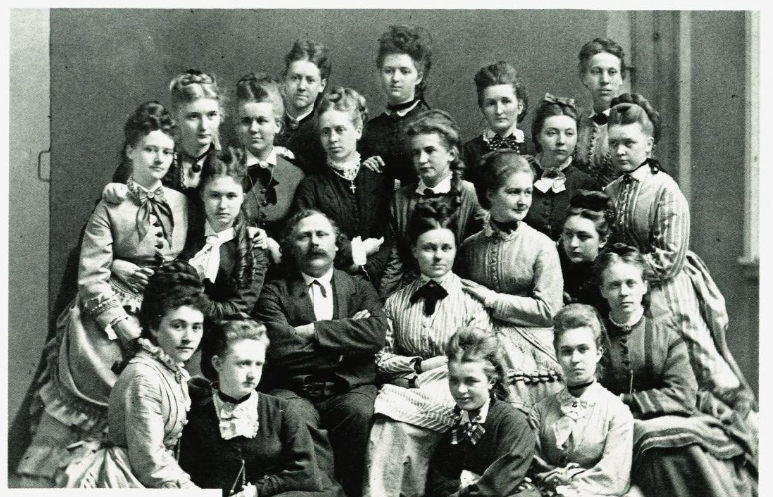
1874
Munich was the destination for the journey Backer began in October 1874. There she intended to become a portrait painter. On her travels she met Kitty Kielland (1843–1914) for the first time. The latter was en route to Karlsruhe for her second year of studying with Hans Gude (1825–1903). The friendship between Kielland and Backer was to last their entire lives.
Women were not permitted to join the art academy in Munich, so Backer began studying with Eilif Peterssen (1858–1925), Christian Meyer Ross (1843–1904) and the German portrait painter Lambert Linder (1841–1889). In 1878, Peterssen painted an impressive portrait of Harriet Backer.

1877
The motif in In the Servants’ Quarters is historical, depicting a pikeman polishing his armour. Due to their interest in portraying historical details correctly, many of the artists in Munich obtained several costumes and old objects that they would use for their compositions. In the Servants’ Quarters was exhibited at the Munich art society and Christiania kunstforening and was later sold to King Oscar II (1829–1907).
Harriet Backer wrote in her autobiographical notes : ‘The previous winter there had been big artists’ carnivals in Munich where we had joined in and even obtained mediaeval costumes, copied as accurately as possible from pictures in the art museum. Eilif Peterssen had worn my pikeman’s costume’.
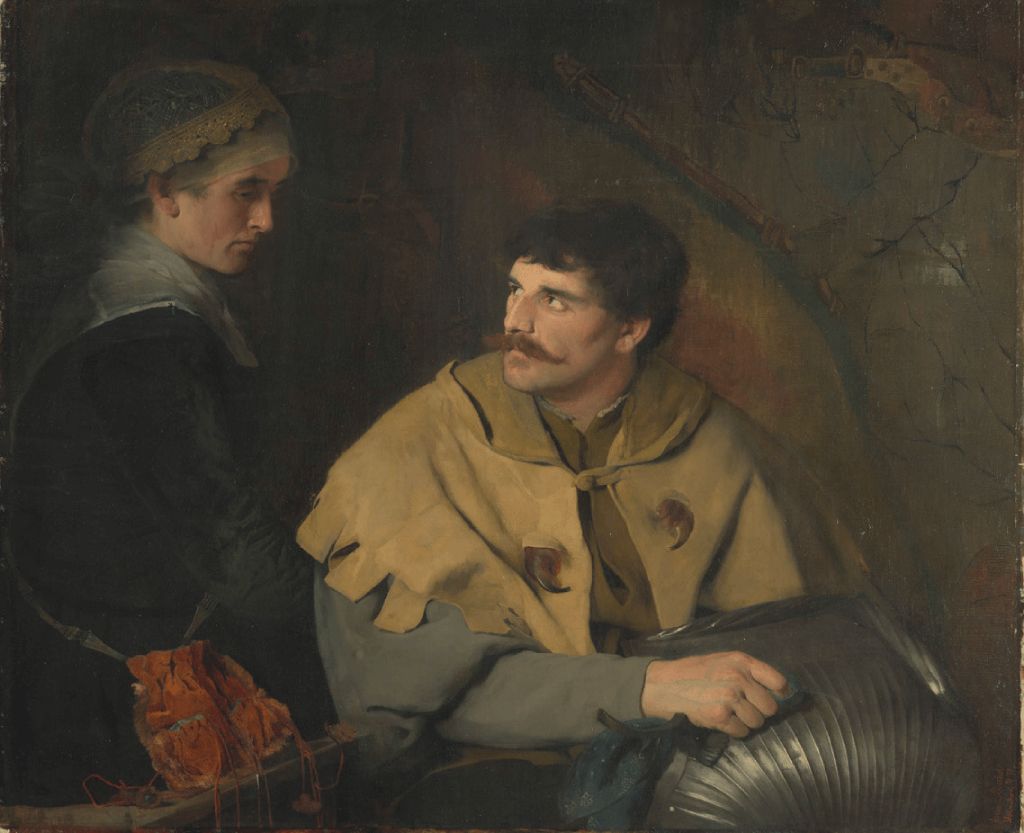
1878
Harriet Backer left Munich for Paris, and she alternated between spending the summers in Norway and studying in the world metropolis until 1888. In Paris, Backer studied at Madame Trélat de Lavigne’s (1825–1907) academy, where Léon Bonnat (1833–1922) and Jean-Léon Gérôme (1824–1904) were amongst the teachers. Several Scandinavians studied under Bonnat, including Eilif Peterssen and Asta Nørregaard, Denmark’s Bertha Wegmann (1846–1926) and Sweden’s Hildegard Thorell (1850–1930). Bonnat became the director of the art academy in Paris in 1900.
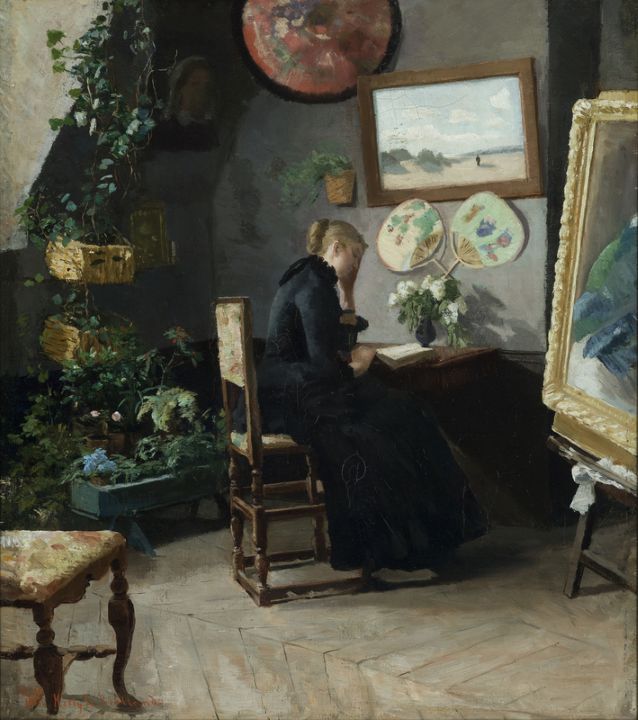
1880
Backer participated in the Salon with Solitude. On the advice of Léon Bonnat, the interior from Schliersee was complemented with a sitting female, and Backer received a ‘Mention Honorable’ for the painting. The French press wrote :
‘[...] a small canvas, La Solitude, of rare value, and which one cannot look at without feeling moved. It was painted by a Norwegian lady, a débutante, whose name I am seeing and writing for the first time, Miss H. Backer. [...] It is a splendid debut.’

1881
Backer shared an apartment with Kitty Kielland in Paris until 1888. In 1881–1882, Backer and Kielland visited Rochefort-en-Terre in Brittany together with Kielland’s teacher, Léon Pelouse (1838–1891). The small town and surrounding area provided several picturesque landscape motifs for Kielland. As for Backer, her encounter with Breton farm interiors was an important one, and at two farms she painted her first contemporary interiors, including Fourre-tout.
Backer’s interior Andante was exhibited at the Salon in Paris that same year. Andante was Backer’s first motif with a musical theme. The motif was from the ‘Salle de la Reine Blanche’ at the Cluny Museum. The painting was acquired by Stavanger kunstforening in 1882.
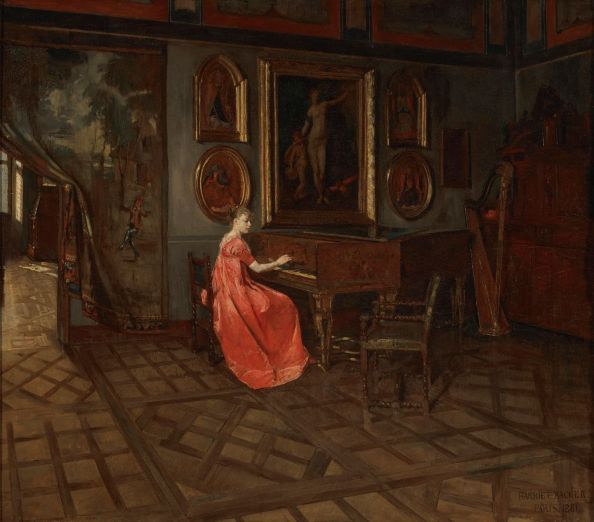
1883
Blue Interior was Backer’s first entry in the Autumn Exhibition in Kristiania. It had been painted in Paris that same year, and her colleague Asta Nørregaard sat for the female figure depicted in the painting. Blue Interior must be considered Backer’s big breakthrough, and thanks to its impressionist-inspired use of colour, it set the standard for Backer’s room depictions. The painting was bought by the Norwegian National Gallery in 1964.
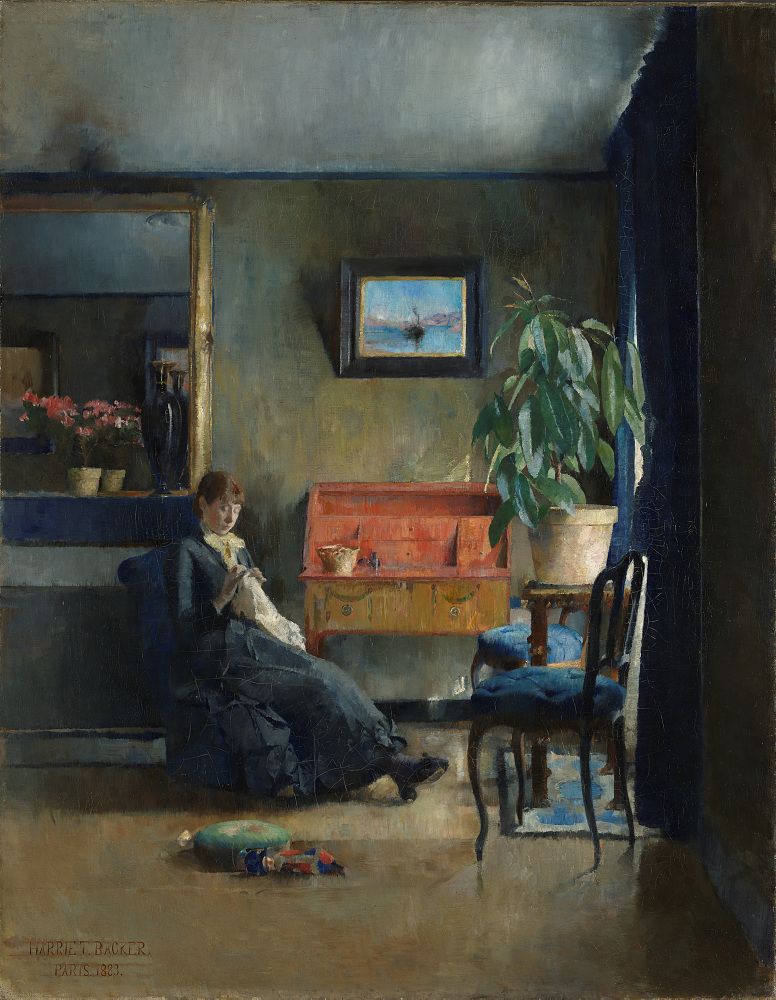
1886
That summer a group of artists met at Fleskum farm in Bærum outside Kristiania. Harriet Backer and Kitty Kielland returned from Paris, while their friends from the Munich years Christian Skredsvig (1854–1924), Eilif Peterssen, Gerhard Munthe (1849–1929) and Erik Werenskiold (1855–1938) were already settled in Norway. The so-called ‘Fleskum summer’ of 1886 was a milestone in Norwegian art history, and several important works depicting the long summer nights came into being that summer. Christian Skredsvig’s The Willow Flute, Eilif Peterssen’s Summer Night and Kitty Kielland’s Summer Night all reflect the artists’ interest in the landscape surrounding Fleskum farm. Backer differed from her colleagues in that she chose to study the light and the reflections indoors, something which was described as ‘en plein air indoors.’ Awarded the Norwegian state’s travel stipend for the years 1886–1888

1888
Harriet Backer left Paris and settled in Kristiania. She spent the summer in Eggedal with Gerhard Munthe and Christian Skredsvig. From that autumn and until 1893, she periodically lived in Sandvika on the outskirts of the capital, where she found numerous local motifs, including Tanum church. Tanum church was rarely used, and Backer could spend long periods working inside the building.
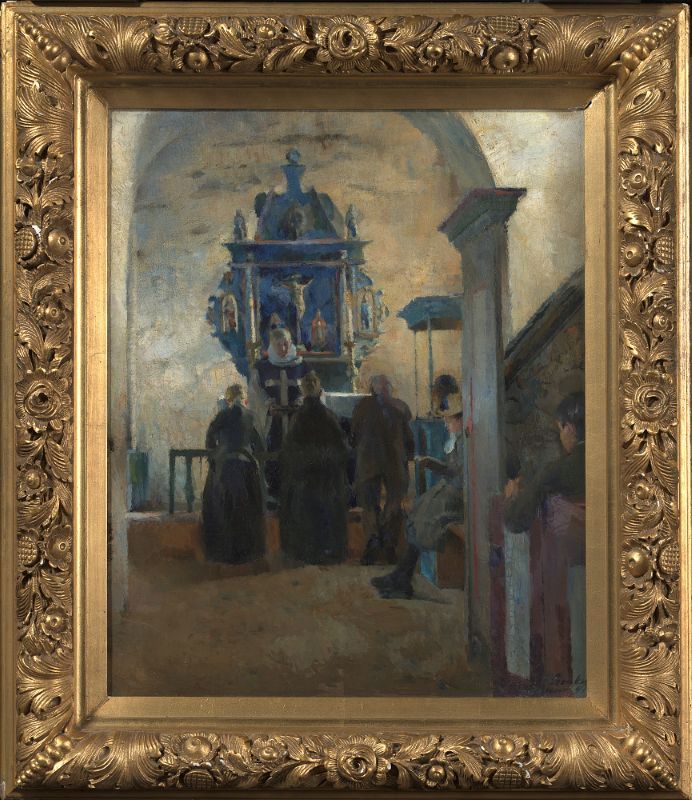
1889
Her painting Chez moi was awarded a silver medal at the world’s fair in Paris. The following year the painting became the first of Backer’s works to be acquired by the National Gallery. The model was Asta Lie Isaachsen (1861–1921), daughter of the author Jonas Lie (1833– 1908). Jonas Lie and his family lived in Paris between 1882 and 1906, where they were at the centre of the Scandinavian ex-pat community. Another central figure was the Finnish sculptor Walter Runeberg (1838–1920), who frequently hosted events in his studio.
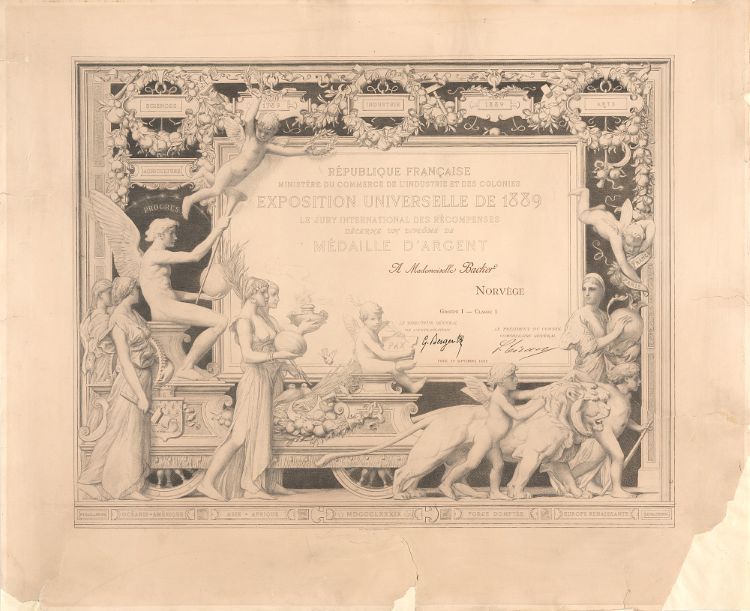
1891
Harriet Backer opened her own painting school in Kristiania. She had a number of pupils before closing down the school in 1909. Backer was an honest and consistent teacher and well liked. Amongst her students were Nikolai Astrup (1880–1928), Harald Sohlberg (1869–1935), Halfdan Egedius (1877–1899), Astri Welhaven (1881– 1967), and Charlotte Wankel (1888–1969).
Backer showed The Altar in Tanum Church at the Autumn Exhibition in Kristiania.
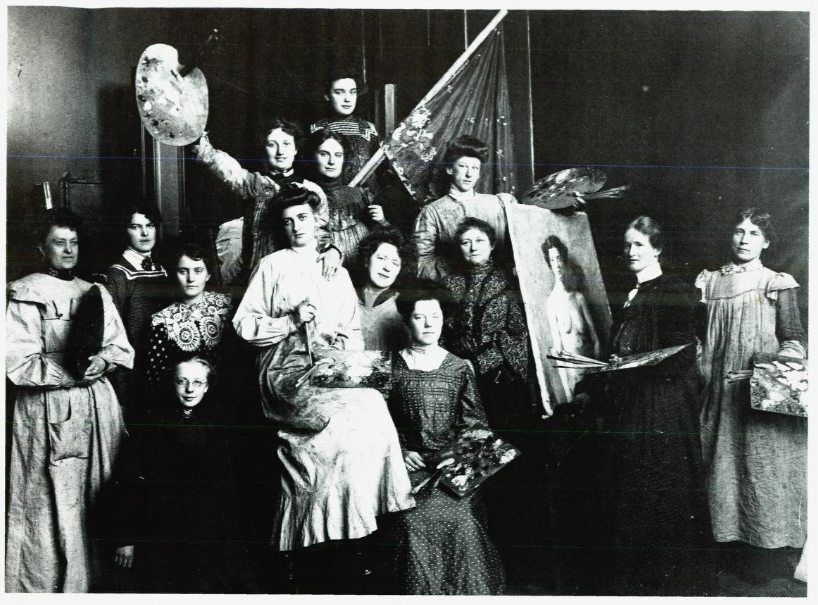
1893
Christening in Tanum Church was exhibited at the world’s fair in Chicago, where it was sold to the Saint Louis Art Museum in Missouri. It was only acquired by the National Gallery in 1959.
On 23 January the Norwegian Association for Women’s Rights honoured the author Camilla Collett (1813–1895) on her 80th birthday. Backer was a member of the committee which organised a celebratory women’s march through the city to Collett’s home.

1896
Backer spent the summer with her writer friends Hulda Garborg (1862–1934) and Arne Garborg (1851–1924) in Alvdal. Arne Garborg had been one of her closest friends since their years in Paris. Backer became fascinated by the local landscape during her stay and completed River Einunna the following year.

1898
The Norwegian government appointed Harriet Backer to the National Gallery board of directors and acquisitions committee. She enjoyed much respect in this role amongst museum staff, her contemporaries and younger artists. She was happy to support purchases of contemporary pieces and was the driving force behind the acquisition of paintings by Jean Heiberg (1884–1976). Backer held this role for 20 years until 1918.
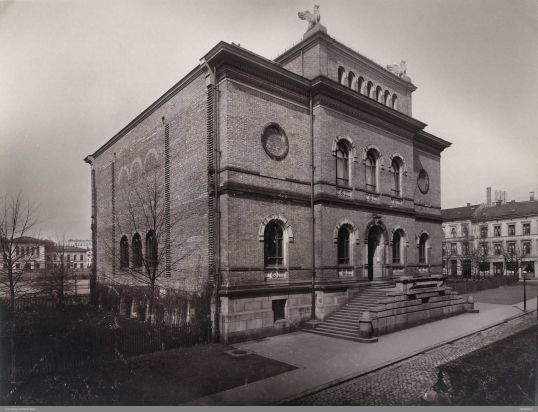
1902
Moved to a live/work studio at Hansteens Gate 2 in central Kristiania. She would live here until her death in 1932. The building had a separate studio floor, and Asta Nørregaard and Kitty Kielland both lived in the same block for a while.

1904
First visit to Uvdal stave church. She spent the summers up until 1909 here painting several versions of the interior.
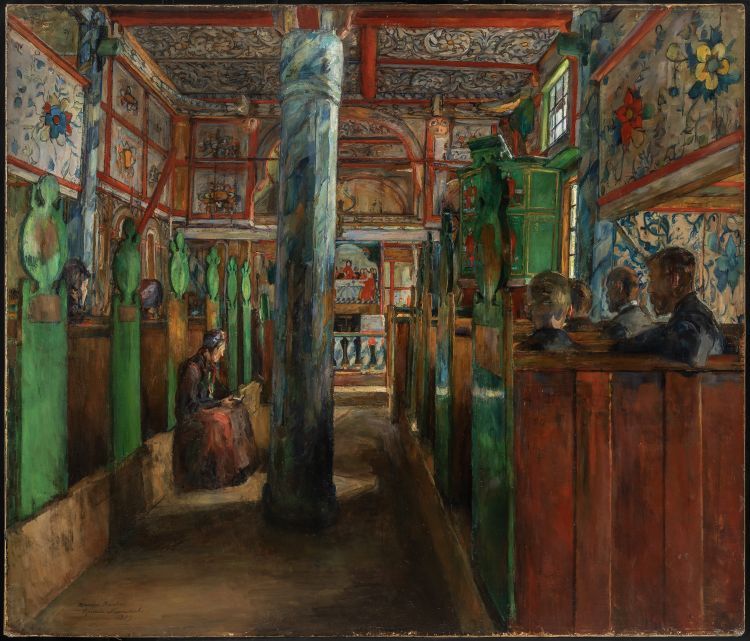
1907
Christiania kunstforening hosted Backer’s first solo exhibition with around 30 paintings. It had been 30 years since she exhibited In the Servants’ Quarters at that very same venue. The exhibition was warmly received. The art historian Carl Wille Schnitler (1879–1926) wrote: ‘Perhaps the most profound trait of her art is that it is so strictly limited in both quantity and motifs. Yet even with those limitations it is exquisite: profound, spiritual, formally, and colouristically masterful.’
Her sister Agathe Backer Grøndahl died in early June, barely 60 years old. Her death affected Backer deeply, and the rest of the year was unsettled by her sister’s passing. From a letter to Sigrun Munthe, June 1907: ‘I am so physically tired in my head and back that I wish to do nothing outside work. [...] I feel more desolate every day, and nor do I wish it were otherwise. I will just have to seek to spend time with her in my thoughts as much as I can.’
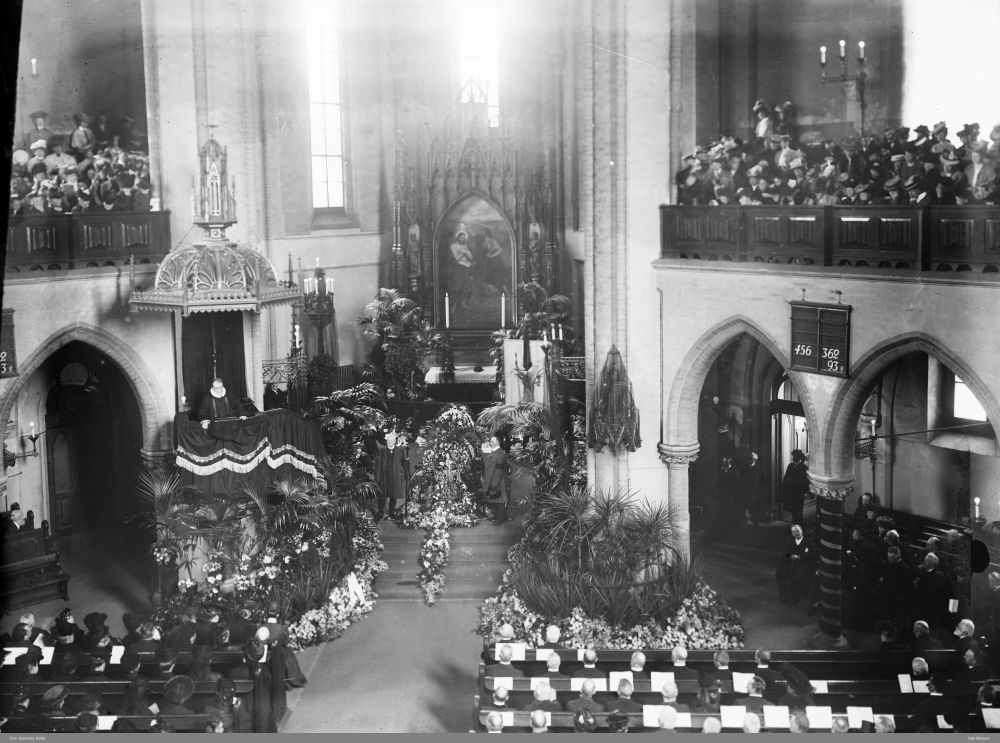
1908
In 1908 Harriet Backer received the King’s Medal of Merit (gold). The following year she received a private stipend from the philanthropist Olaf Schou (1861–1925) of NOK 1,000 a year. This came in handy, as the revenues from her painting school fell when the national academy of art opened.
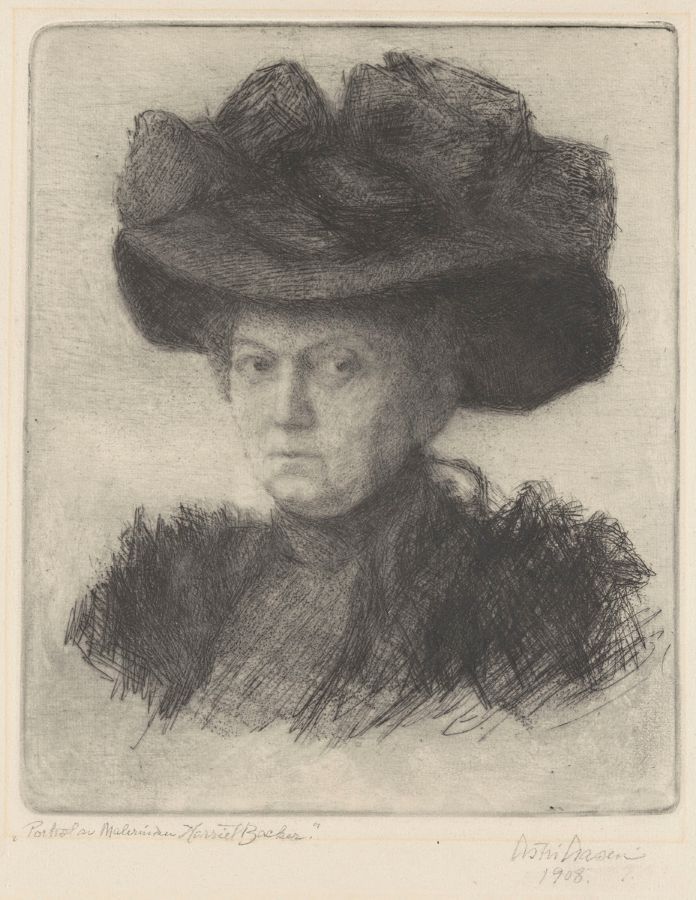
1910
Backer spent a long summer in Bergen. The art collector Rasmus Meyer (1858–1916) had asked her to paint the interior of St. Mary’s church. The painting was completed in 1913, and it would be her last church interior.
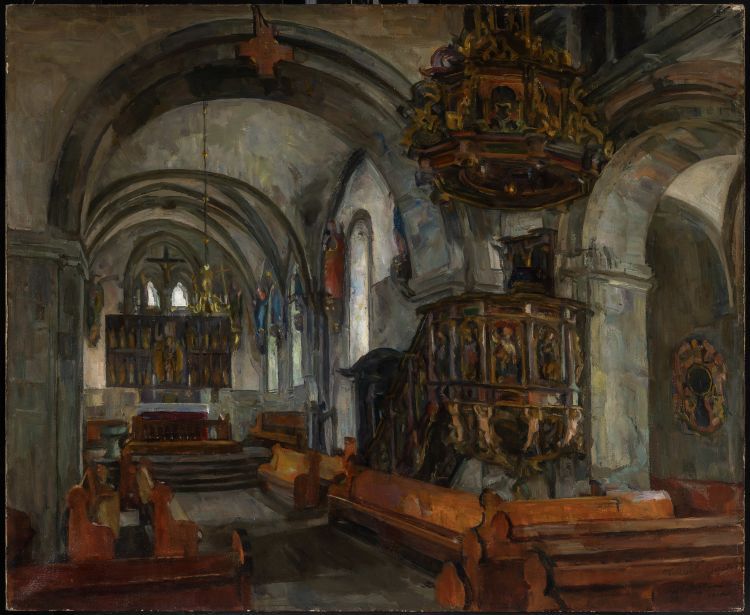
1914
Backer staged a new solo exhibition at Kunstnerforbundet in Kristiania. Backer was a member of the jury for the exhibition of 1914 to commemorate the centenary of Norway’s constitution.
Backer’s long-standing close friend and colleague, Kitty Kielland, died. Her dementia had been advancing since 1910, and she spent her final days at Doctor Dedichen’s private asylum in Østre Aker outside Oslo.
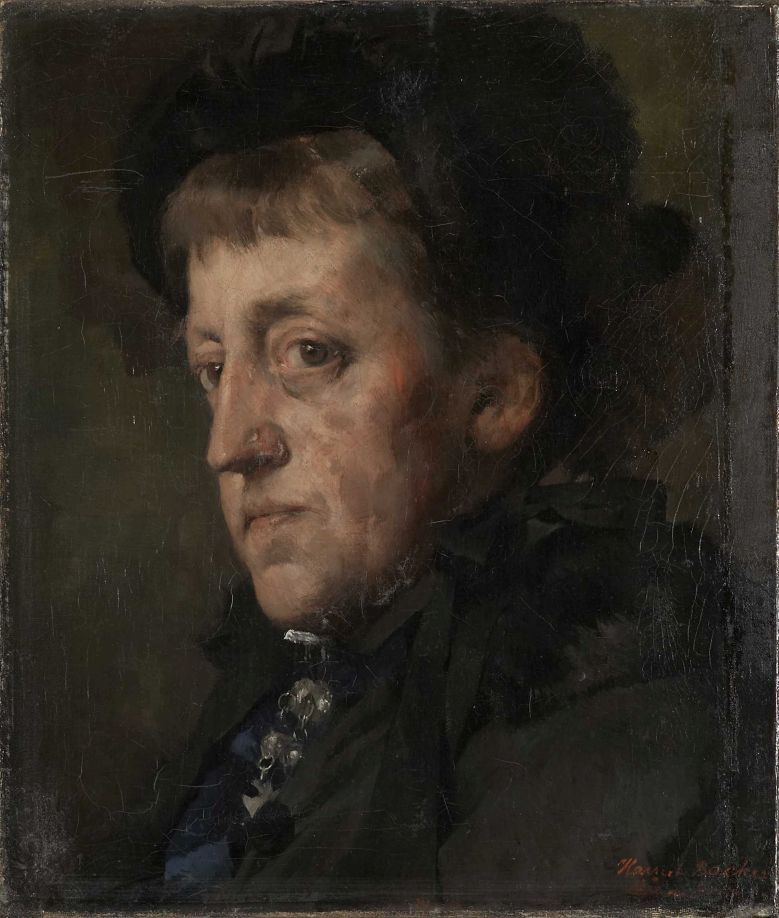
1916
Backer holds a solo exhibition at the Bergen Art Association. The critics are particularly taken by her atmospheric depictions of nature.

1918
Backer was a member of the jury when art for the Bergen stock exchange was being chosen. Axel Revold (1887–1962) won the competition and completed the work in 1923.
The director of the National Gallery, Jens Thiis (1870–1942), wanted a still life by Backer for the museum. Backer never fully completed the painting. She continued working on it until 1931, and it was given the nickname ‘Evighetsbilledet’ [the infinite painting]
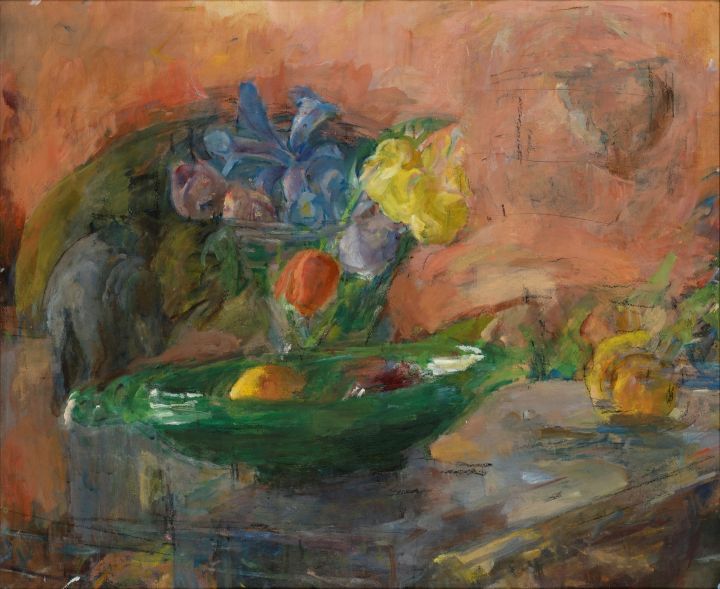
1920
The Norwegian Association for Women’s Rights applied to parliament for a stipend: ‘The fact that Harriet Backer has remained a loyal and on occasion pioneering member of the Norwegian Association for Women’s Rights throughout her life is an honour for our organisation.’
The following year she was awarded the Norwegian state’s artist’s stipend, a sum of NOK 1,600 a year. The same year, Backer was made an honorary member of the Norwegian Association for Women’s Rights.
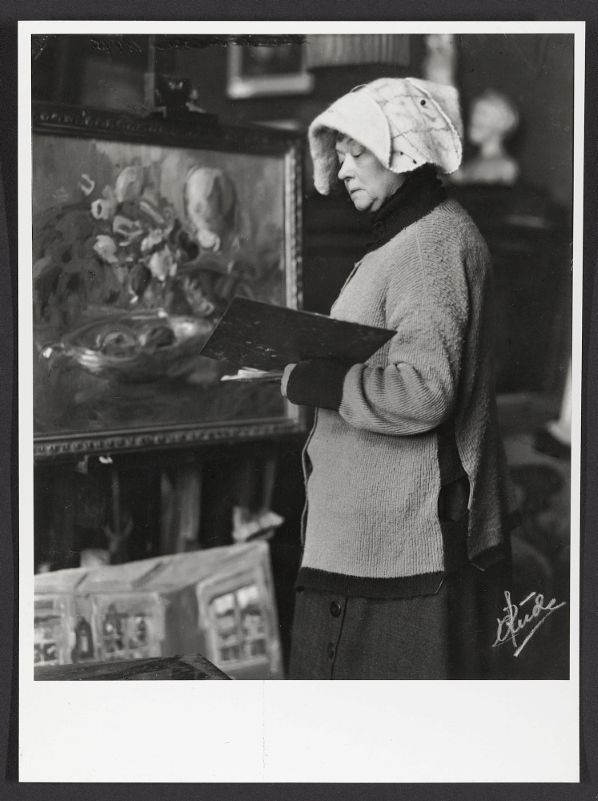
1922
Backer held a solo exhibition at Kunstnerforbundet in Kristiania. Backer exhibits 55 paintings spanning a period of over 50 years. Karoline Grude (1882–1953) in the magazine For Bygd og By wrote of Backer’s interior motifs:
‘One of the things that moved me the most about the exhibition was the deep compassion with the women that shone through in the choice of both motif and composition. She [Backer] is wise and good.
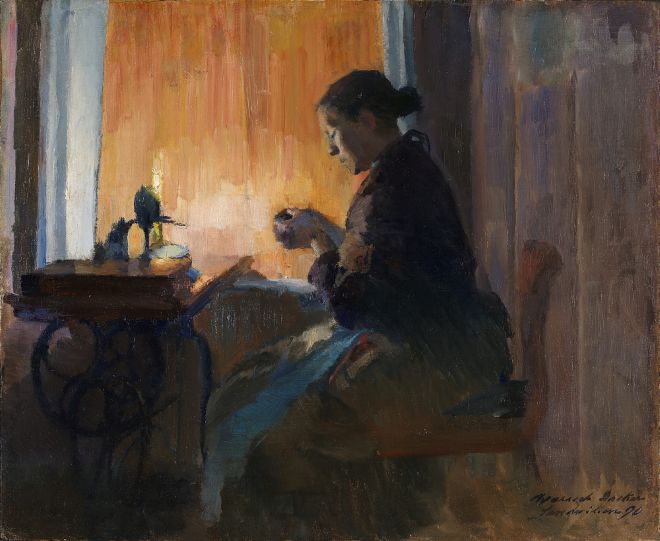
1924
Erling Lone’s (1887–1933) biography of Harriet Backer was published. She contributed an autobiographical text about her childhood and youth. Lone also included a chronological list of works, probably drawn up in consultation with the artist.

1925
Harriet Backer was appointed Knight of the Order of St. Olav. At the age of 80, she held her final solo exhibition, which was shown at Christiania kunstforening, Bergens kunstforening and Konstnärshuset in Stockholm.
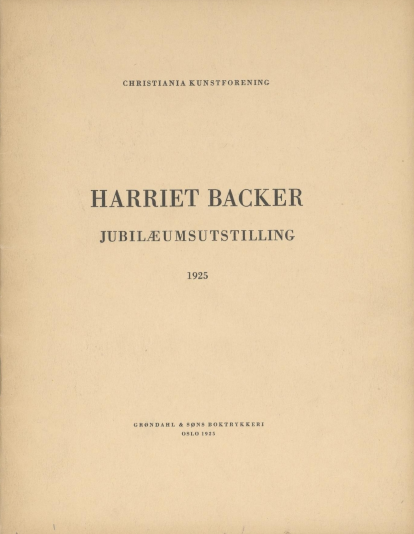
1928
Eilif Peterssen died at Christmas in 1928, and Gerhard Munthe a few weeks into the new year. The ranks of Backer’s generation were thinning, and she felt a sense of loss and emptiness.
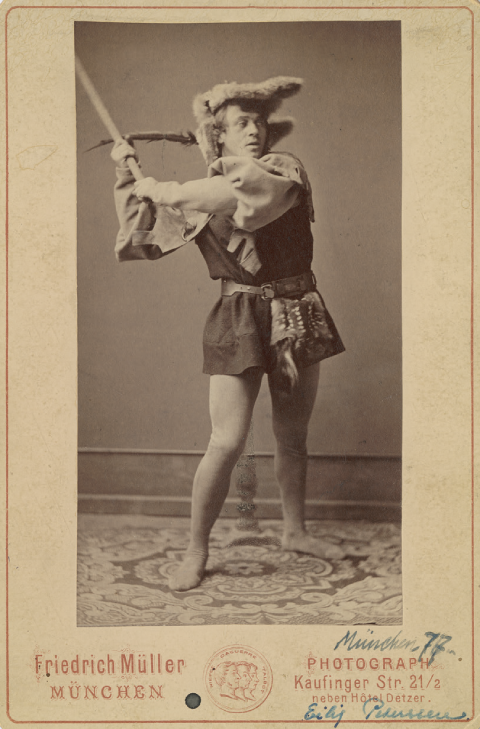
1930
On occasion of her 85th birthday, she was celebrated with a torchlight procession through Oslo’s streets. Backer greeted the well-wishers from her balcony in Hansteens Gate. In a tribute in the newspaper Tidens Tegn, Erik Werenskiold wrote: ‘Today [the warmth] radiates back on her from her admirers and friends.’ Backer also received the Knight’s Cross of the Order of St. Olav.
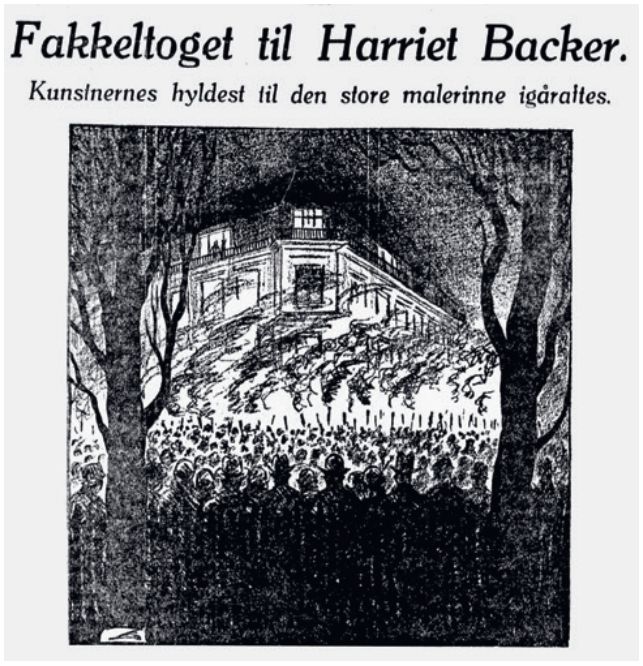
1932
Harriet Backer died on 25 March at her home in Hansteens Gate.
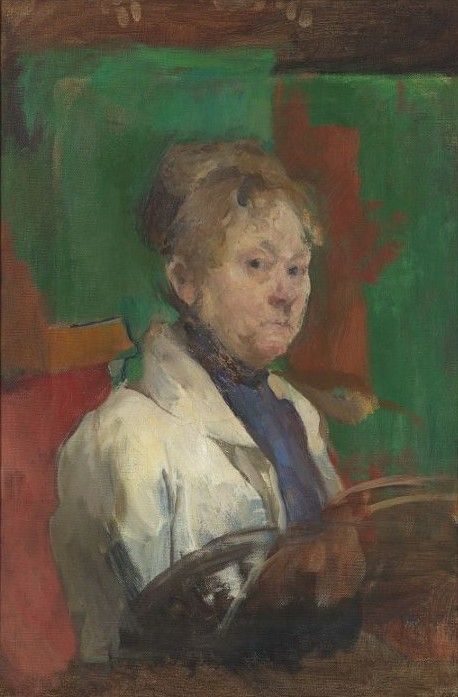
List of Illustrations
